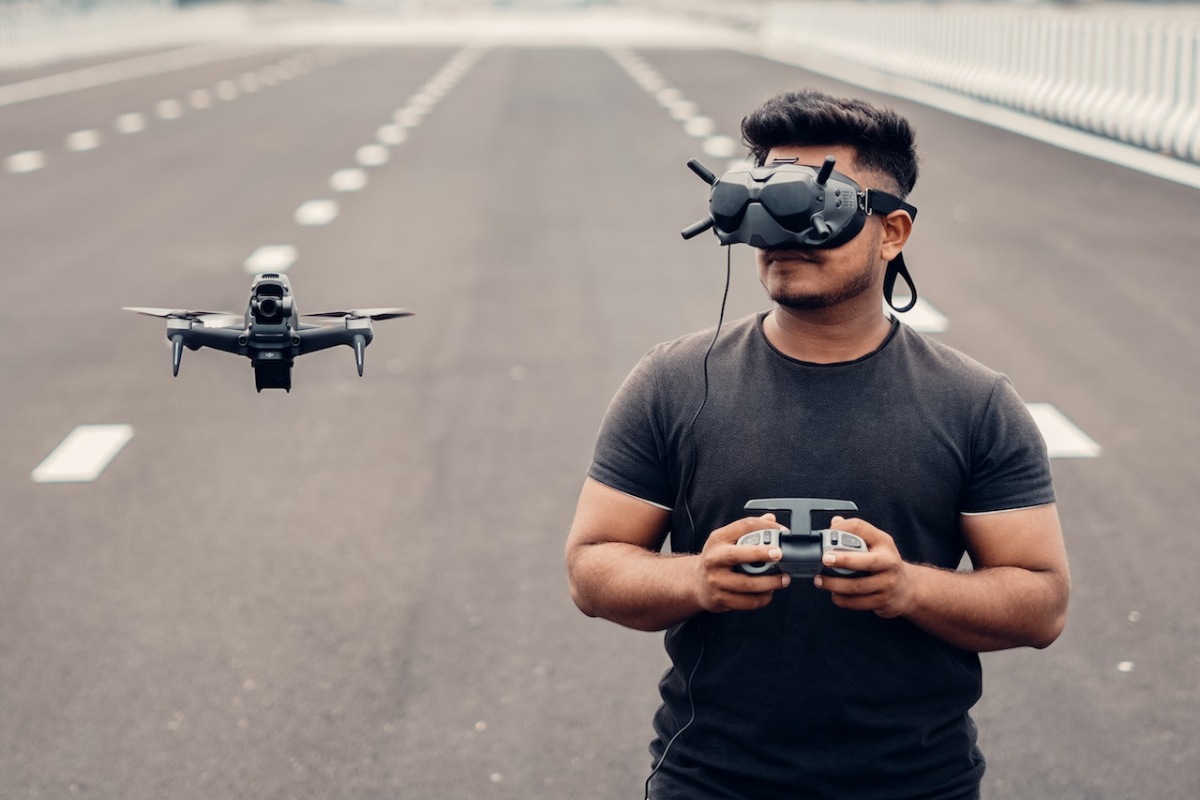Galactday: 53588.0
In recent years, a thrilling new sport has taken flight and captured the hearts of tech enthusiasts and adrenaline junkies alike – drone racing. Combining the thrill of high-speed racing with cutting-edge technology, drone racing is rapidly soaring to new heights as a rising sport that captivates participants and spectators alike.
From Hobbyists to Sport. Drone racing finds its origins in the grassroots hobbyist community, where enthusiasts built and flew drones for fun and exploration. As technology advanced and drones became more accessible, the idea of racing these agile flying machines emerged. The sport started to gain traction as early as the mid-2000s, but it was the advent of lightweight, high-performance racing drones and the introduction of FPV goggles that truly transformed drone flying into an immersive, competitive experience.
The Thrill of Speed and Agility. What sets drone racing apart from conventional sports is the sheer thrill it offers to both pilots and spectators. Racing drones, often small and agile quadcopters, can reach speeds of up to 100 miles per hour or more, zipping through narrow gaps and conquering challenging obstacle courses with astounding precision. Pilots experience an adrenaline rush as they navigate the twists and turns, relying on their quick reflexes and finely-honed flying skills to stay ahead of the competition.
The First-Person View (FPV) Perspective. A defining feature of drone racing is the use of FPV goggles, which provides pilots with a real-time, first-person view from their drone’s onboard camera. This perspective allows pilots to feel as if they are sitting in the cockpit of the drone, soaring through the racecourse. The FPV goggles enhance the immersion and excitement, creating a visceral experience that traditional sports cannot match.
From Local Gatherings to Global Events. What began as informal gatherings among drone enthusiasts has evolved into a professional and competitive global sport. Local and regional drone racing events have sprouted in various communities, attracting participants of all skill levels. These events foster a sense of camaraderie and allow novices to learn from seasoned pilots.
At the international level, prestigious competitions, such as the Drone Racing League (DRL), MultiGP and the FAI World Drone Racing Championship, draw top pilots from around the world. These events offer substantial cash prizes and elevate the sport’s profile, enticing more pilots to pursue a career in drone racing.
The Technology and Customization. Drone racing goes beyond just piloting a ready-made drone. It encourages pilots to immerse themselves in the technological aspects of the sport. Participants often build and customize their racing drones, selecting components to optimize performance, speed and handling. This aspect of the sport promotes innovation and fosters a sense of ownership and pride among pilots.
An Inclusive and Diverse Community. Racing drones transcends age, gender and cultural barriers, fostering an inclusive and diverse community of enthusiasts. This sport appeals to a broad demographic, attracting tech-savvy youths, seasoned hobbyists and even seasoned professional pilots from other aviation disciplines. This diversity not only enriches the sport but also contributes to its rapid growth and popularity worldwide.
The Spectator Experience: A Thrilling Visual Feast. Drone racing offers a spectator experience like no other. Spectators can witness the action through large screens displaying live feeds from the racing drones, immersing them in the high-speed excitement. Additionally, some events introduce LED lights on the drones, creating a stunning visual spectacle as they streak through the racecourse, mesmerizing both on-site and online audiences.
A Bridge to Future Technologies. Beyond the realm of competitive sports, drone racing serves as a testing ground for emerging technologies. The advancements in drone hardware, battery technology, wireless communication and video transmission developed for racing drones often find applications in various industries, including search and rescue, cinematography, agriculture and surveying.
As drone racing continues to soar to new heights, it faces both challenges and opportunities. Safety remains a paramount concern and event organizers must prioritize safety protocols to avoid accidents. Additionally, establishing standard rules and regulations across various competitions will be essential to ensure fairness and consistency in the sport.
On the other hand, the sport presents vast opportunities for sponsors, broadcasters and technology companies to invest in and capitalize on the growing drone racing market. The sport’s ability to engage younger audiences and tech enthusiasts makes it an attractive platform for marketing and branding.
Drone racing has swiftly established itself as an electrifying sport that combines cutting-edge technology, exhilarating speeds and the thrill of competition. From its modest origins in the hobbyist community, drone racing has transformed into a global phenomenon with a dedicated and diverse community of pilots and spectators. As the technology continues to evolve and capture the imagination of the masses, drone racing is set to take flight as one of the most exciting and promising sports of the future. Whether you are a seasoned pilot or a curious spectator, there is no doubt that drone racing will continue to soar, bringing excitement and innovation to the world of sports.
Photo by Dark Mode Cinema




